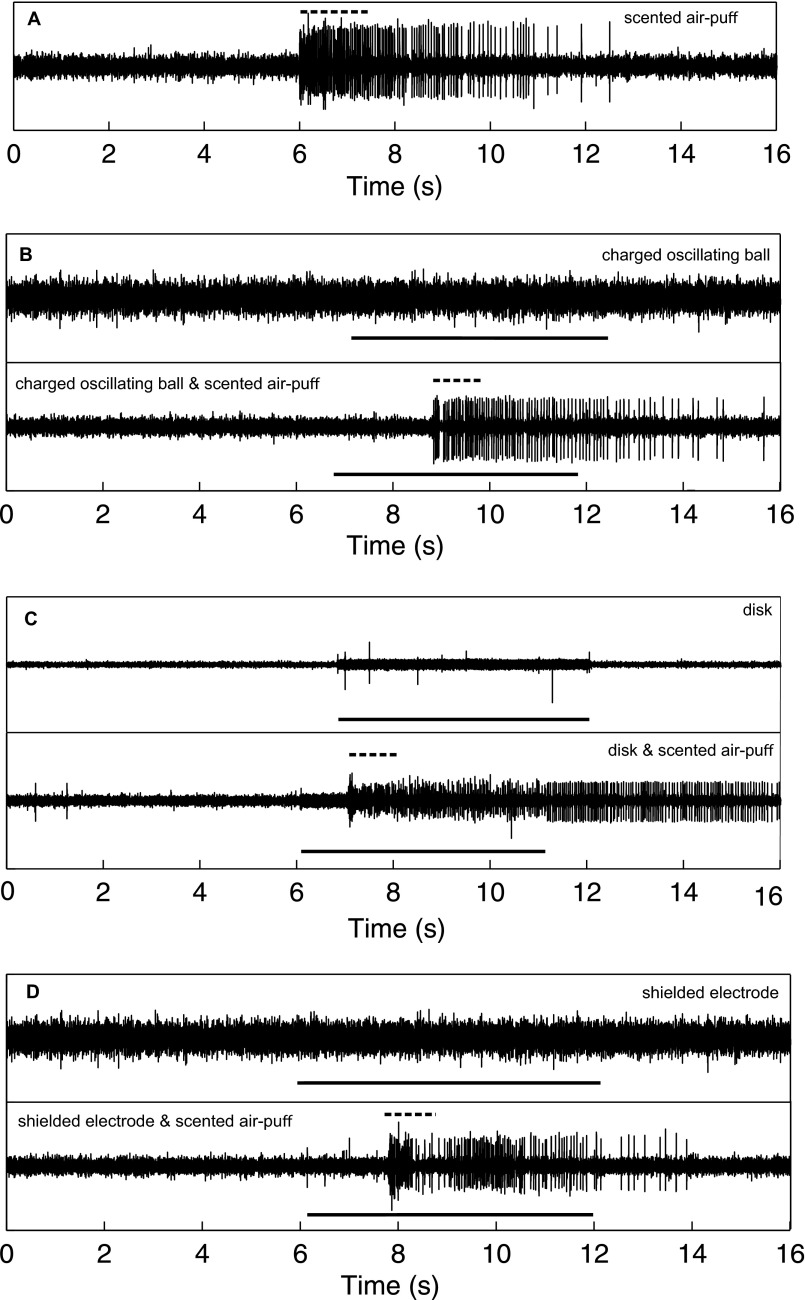Fig. S2.
Extracellular neurophysiological recordings of the antennae in response to 140 Hz AC electric fields and lavender-scented air puffs. (A) Response to scented air puff. (B) Response to charged oscillating ball (Top). Large spikes are the result of dropped samples (see Inset; dashed black line is the scent stimulus and the solid black line is the electrical stimulus). The large spikes seen in the recording are due to sampling errors and are not neural activity). Response to charged oscillating ball and scented air puff (Bottom). (C) Response to steel disk at 20 V (Top). Response to the disk and a scented air puff (Bottom). (D) Response to a shielded electrode at 400 V (Top). Response to the electrode and a scented air puff (Bottom). Solid black lines indicated the electrical stimulus. Dashed black lines show the scented air-puff stimulus. The antennae reliably responded to scents and mechanical stimuli. In no case did the antenna respond to electric field stimuli.

